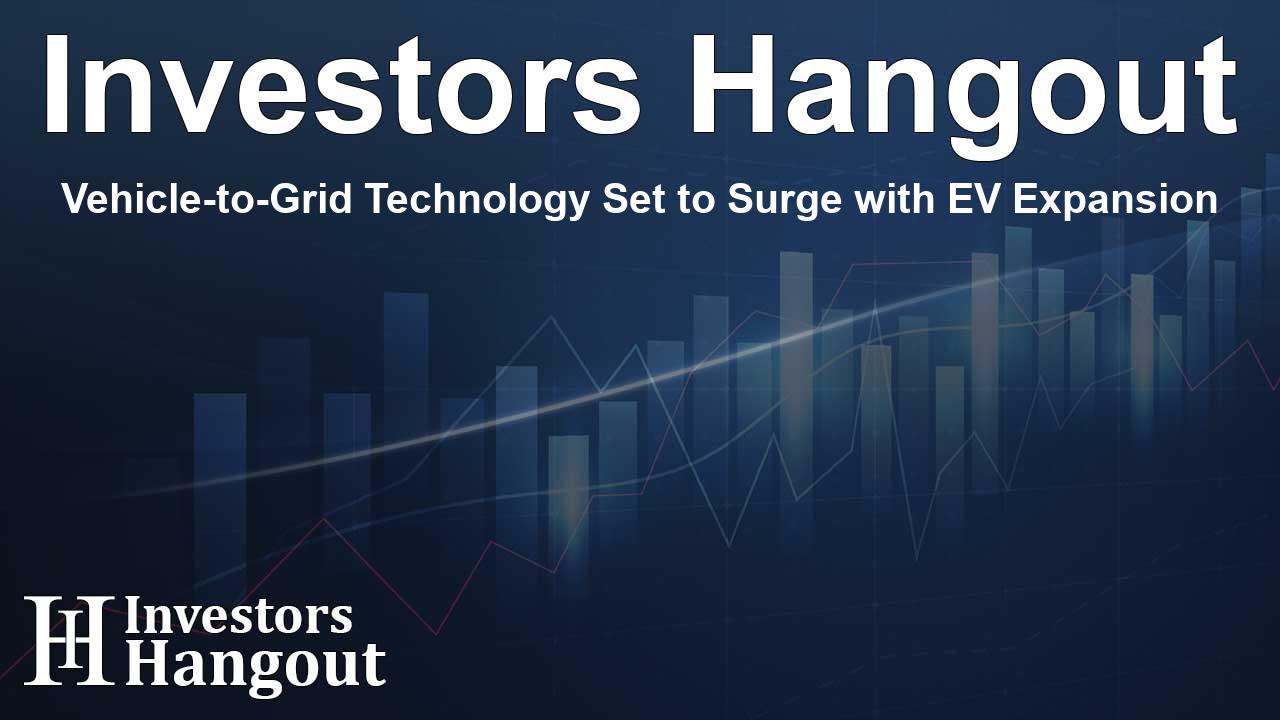Vehicle-to-Grid Technology Set to Surge with EV Expansion

Insights into the Vehicle-to-Grid Technology Market
As the adoption of electric vehicles (EVs) continues to rise, the vehicle-to-grid (V2G) technology market is experiencing a remarkable transformation. With the market forecasted to reach approximately USD 49.75 billion by 2034, this innovative technology offers a vital connection between electric vehicles and the power grid, enabling the bidirectional flow of electricity. This means that not only can vehicles draw energy from the grid, but they can also return surplus energy, contributing significantly to grid stability and renewable energy usage.
Current Market Dynamics and Projections
Currently valued at USD 17.43 billion in 2027, the V2G technology market is anticipated to grow at a compound annual growth rate (CAGR) of 28.13% through 2034. Factors such as increased EV adoption, growing demand for smart grid integration, and the need for renewable energy storage are driving this trend, making V2G a crucial component of the future energy landscape.
The Role of Electric Vehicles in Energy Supply
The growing acceptance of electric vehicles worldwide is integral to the expansion of V2G technology. As EVs become a more common sight on roads, their potential as mobile energy storage units that can provide energy back to the grid becomes increasingly significant. This capability not only helps balance energy loads but also reduces reliance on fossil fuels and enhances the role of renewable energy.
Key Trends Shaping the V2G Technology Market
Several emerging trends are pivotal to the ongoing changes within the vehicle-to-grid technology market. Notably, large-scale V2G deployments are making strides as EVs become essential components of fleet operations and shared mobility services.
Growing Standardization and Infrastructure Development
The standardization of universal communication protocols like ISO 15118 is facilitating the interoperability of EVs with various energy systems. Furthermore, investments in electric vehicle supply equipment (EVSE) are crucial for establishing the needed infrastructure to support two-way energy flow.
Challenges Facing the Vehicle-to-Grid Market
Despite the bright prospects, the V2G technology market faces challenges that could hinder its growth. The initial investment in bidirectional chargers and advanced EVSE can be prohibitively high for some consumers and utility companies. Additionally, concerns regarding data security and consumer anxieties about running out of battery power in their vehicles can slow down the adoption of V2G systems.
Regional Opportunities and Growth Patterns
Regions like North America are observing significant growth in this market due to robust governmental support for electric vehicle infrastructure and sustainability initiatives. Meanwhile, Europe is also leading the charge, fostering a favorable environment for V2G technology through policies that encourage clean energy solutions and renewable energy integration.
Recent Developments in V2G Technology
Recent advancements highlight a growing participation in V2G projects worldwide. Notable collaborations between auto manufacturers and utility companies aim to create systems that leverage vehicle batteries as part of the larger energy grid. Such initiatives not only improve grid resilience but also offer economic incentives to EV owners.
Frequently Asked Questions
What is vehicle-to-grid (V2G) technology?
V2G technology allows electric vehicles to send electricity back to the grid, enhancing grid stability and facilitating renewable energy use.
How much is the vehicle-to-grid market expected to grow?
The vehicle-to-grid market is projected to reach approximately USD 49.75 billion by 2034, with a CAGR of 28.13% from 2025 to 2034.
What are the challenges facing V2G adoption?
Key challenges include high upfront costs for bidirectional chargers and concerns about data security and battery range anxiety among consumers.
Which regions are leading in V2G implementation?
North America and Europe are leading in V2G technology adoption due to strong governmental support and infrastructure investments.
What roles do electric vehicles play in these systems?
Electric vehicles act as mobile energy storage units, capable of balancing energy loads and providing renewable energy back to the grid when needed.
About The Author
Contact Owen Jenkins privately here. Or send an email with ATTN: Owen Jenkins as the subject to contact@investorshangout.com.
About Investors Hangout
Investors Hangout is a leading online stock forum for financial discussion and learning, offering a wide range of free tools and resources. It draws in traders of all levels, who exchange market knowledge, investigate trading tactics, and keep an eye on industry developments in real time. Featuring financial articles, stock message boards, quotes, charts, company profiles, and live news updates. Through cooperative learning and a wealth of informational resources, it helps users from novices creating their first portfolios to experts honing their techniques. Join Investors Hangout today: https://investorshangout.com/
The content of this article is based on factual, publicly available information and does not represent legal, financial, or investment advice. Investors Hangout does not offer financial advice, and the author is not a licensed financial advisor. Consult a qualified advisor before making any financial or investment decisions based on this article. This article should not be considered advice to purchase, sell, or hold any securities or other investments. If any of the material provided here is inaccurate, please contact us for corrections.
